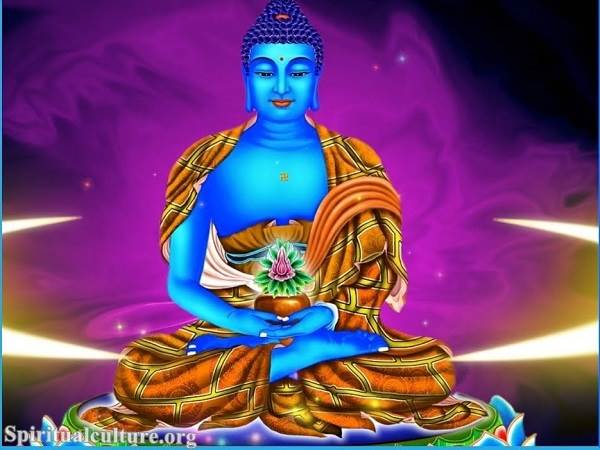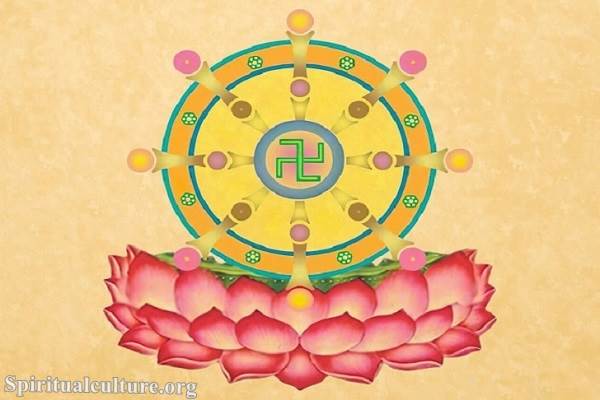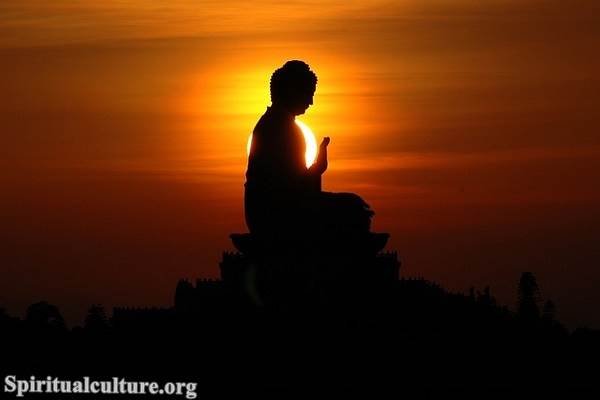Meditation is not simply about closing the eyes and sitting still. It is a sacred journey inward — a return to the quiet center where clarity, compassion, and truth arise. Yet along this path, we encounter resistance. The ancient Buddhist teachings name these resistances nīvaraṇa, or “hindrances” — five specific mental states that obscure wisdom, disturb peace, and hinder meditative progress.
At Spiritual Culture, we explore these not as enemies to be crushed, but as invitations to deeper awareness. When we understand what these hindrances are, how they function, and how they dissolve, we begin to see them not as blocks on the path, but as teachers along it.
This article will explore the Five Hindrances in Meditation from a spiritual and psychological perspective — their origins, how they show up in daily life, and what sacred teachings say about transforming them into stepping stones on the path to awakening.
The Five Hindrances: A Gateway to Insight
The Buddha described the Five Hindrances as the main obstacles that cloud the mind and prevent insight during meditation. Each one acts like a veil, pulling the heart away from presence, stillness, and clarity.
The five hindrances are:
- Sensual Desire (Kāmacchanda)
- Ill Will (Vyāpāda)
- Sloth and Torpor (Thīna-Middha)
- Restlessness and Worry (Uddhacca-Kukkucca)
- Doubt (Vicikicchā)
Let us enter into each one, not to judge, but to understand and befriend — as Spiritual Culture invites, with open awareness and loving attention.
1. Sensual Desire (Kāmacchanda) — The Pull Toward Pleasure
The Nature of Desire
Sensual desire arises when the mind becomes absorbed in craving pleasurable experiences — whether it’s a taste, a sound, a person, or a fantasy. It distracts us from the here and now, projecting happiness into some imagined future.
In meditation, this might appear as daydreaming about food, replaying a romantic encounter, or longing for music or comfort.
The Metaphor: Sweet Honey on a Razor Blade
The Buddha compared sensual desire to “sweet honey on a razor blade.” It promises sweetness but often comes with subtle harm — grasping leads to suffering when the object of desire changes or eludes us.
The Teaching Response
To work with sensual desire:
- Observe it without suppression.
- Acknowledge the impermanence of pleasure.
- Cultivate contentment with the present moment.
- Reflect on its empty nature — how it never truly satisfies.
As the Dhammapada says:
“The craving of a man addicted to careless living grows like a creeper. He jumps from life to life, like a monkey in the forest looking for fruit.” (Dhp 334)
2. Ill Will (Vyāpāda) — The Energy of Aversion
The Nature of Ill Will
Ill will appears as anger, resentment, frustration, or hatred toward others, oneself, or life itself. It burns the heart and hardens the breath. It’s not merely rage — even subtle annoyance is a form of this hindrance.
In meditation, it could be irritation at a sound, judgment toward oneself, or frustration with the practice.
The Metaphor: Burning Coal
Anger is like holding a burning coal with the intention of throwing it — but we are the one who gets burned first.
The Teaching Response
To transform ill will:
- Practice loving-kindness (mettā) toward oneself and others.
- See clearly the suffering it creates — both inner and outer.
- Acknowledge its impermanence — like a storm, it will pass.
- Let it soften through breath and compassion.
From the Metta Sutta:
“Just as a mother would protect her only child at the risk of her own life, even so, cultivate a boundless heart toward all beings.”
3. Sloth and Torpor (Thīna-Middha) — The Fog of Inertia
The Nature of Sloth and Torpor
This hindrance is a dullness of mind and body, a lack of energy or clarity. It is not sleepiness alone but a heavy fog that dims awareness, often accompanied by resistance to effort.
In meditation, this feels like drifting, drowsiness, or numbness.
The Metaphor: A Prison Cell
It’s as though the mind is locked in a dim, windowless room. You can’t move, and the light has gone out.
The Teaching Response
To uplift the mind:
- Sit with an upright posture to invite alertness.
- Open the eyes slightly or shift to walking meditation.
- Contemplate the urgency of the path — life is fleeting.
- Invoke joy and inspiration — recollect teachers, truths, or the beauty of awakening.
The Anguttara Nikāya reminds us:
“Just as a person who is strong, having thrown off the dust, might sit down in a high place, so too the monk throws off sloth and torpor.” (AN 5.51)
4. Restlessness and Worry (Uddhacca-Kukkucca) — The Turbulent Mind
The Nature of Restlessness and Worry
This hindrance takes the form of a scattered, agitated, or anxious mind. Thoughts race. The heart fidgets. The mind jumps from one thing to another, often stirred by regret or future concerns.
In meditation, it manifests as an inability to stay still — a swirl of unfinished tasks, past mistakes, or planning.
The Metaphor: A Monkey in a Tree
Like a monkey swinging from branch to branch, the restless mind can’t settle long enough to taste stillness.
The Teaching Response
To calm restlessness and worry:
- Bring kind awareness to the breath — one breath at a time.
- Reflect on the futility of overthinking — it changes nothing.
- Forgive oneself — release regrets with compassion.
- Ground in the present — feel the body, hear the silence.
From the Satipaṭṭhāna Sutta:
“When restlessness is present, the meditator knows, ‘restlessness is present.’ When it is not, one knows it is not.”
This is mindfulness: not judging, but knowing — and releasing.
5. Doubt (Vicikicchā) — The Cloud of Uncertainty
The Nature of Doubt
Doubt is not healthy skepticism, but paralyzing confusion. It questions everything: “Is this working? Am I doing it right? Is this even worth it?” It erodes trust in the practice, the path, and sometimes in oneself.
In meditation, doubt is the voice that wants to get up and leave, the whisper that says, “This is pointless.”
The Metaphor: A Fork in the Road
Doubt is like standing at a fork in the road and refusing to walk either path. It suspends action and obscures clarity.
The Teaching Response
To move through doubt:
- Remember your intention — why did you come to the path?
- Reflect on past experiences of peace — even brief ones.
- Study and inquire, but don’t cling to endless thinking.
- Trust the process — insight grows gradually, like a sunrise.
As the Buddha taught:
“Doubt binds the mind like vines in the forest. But one who walks with insight cuts through the tangle.” (Dhp 286)
Why the Hindrances Matter in Daily Life
Though these hindrances arise most vividly during meditation, they also appear in everyday life:
- Sensual desire drives overconsumption and addiction.
- Ill will fuels conflict, blame, and self-criticism.
- Sloth and torpor drain motivation and joy.
- Restlessness and worry feed anxiety and busyness.
- Doubt blocks commitment and growth.
By recognizing them not just on the cushion but in daily encounters, we begin to live with greater clarity, intention, and compassion.
Spiritual Strategies: Working Gently with the Hindrances
Here are some gentle ways to meet the hindrances with wisdom:
- Name what is present: Awareness itself is transformative.
- Shift from judgment to curiosity: “What is this teaching me?”
- Use antidotes wisely: Each hindrance has a balancing quality (e.g., contentment for desire, energy for sloth).
- Return to the breath: The breath is the anchor that brings us back home.
- Cultivate the Seven Factors of Awakening: These qualities — mindfulness, investigation, energy, joy, tranquility, concentration, and equanimity — counteract the hindrances naturally.
Reflect and Reimagine
The Five Hindrances are not failures — they are part of the human path. Every meditator, seeker, and spiritual pilgrim meets them. The question is not whether they arise, but how we respond when they do.
To see them clearly is to disarm them. To greet them with compassion is to begin to transcend them. As you continue your journey inward — whether through meditation, prayer, silence, or service — know that the very hindrances you face may be the very gates through which awakening enters.
May your practice be blessed with clarity, steadiness, and grace.
May every hindrance become a doorway to deeper truth.
May you sit not to escape life — but to awaken within it.



